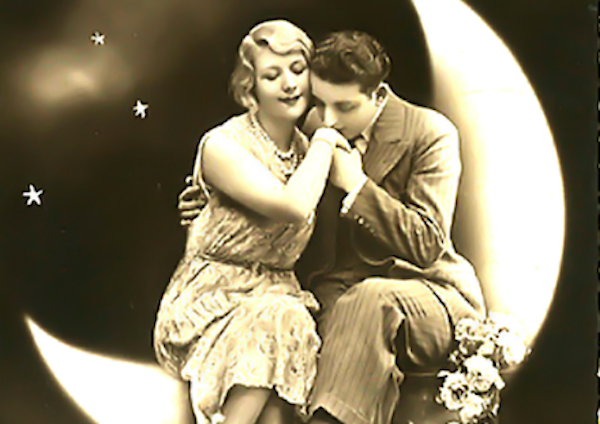“If I needed you, would you come to me, would you come to me to ease my pain? If you needed me, I would come to you, I would come to you to ease your pain.” ~ Townes Van Zandt
~
This used to be one of my favorite songs.
I could sit and listen to it on repeat. I could emotionally feel and quench the desire to be needed by listening to the song. I would create a magnificent story in my head while I listened; a dream man would come in and offer support in a way I had never felt, he would be there for me when I needed him. He would come, respond, and lift me off my feet.
I am a recovering codependent.
It’s no mystery why most of us are codependents or recovering codependents. Codependency is rooted in our books, music, movies, and more. Looking through a historical lens, we can trace codependency back through many generations and can identify how patriarchy contributed, continues to contribute, to the breeding of codependency in society.
There are a plethora of codependent traits and one does not need to check every box to define themselves as a codependent. The baseline of codependency is someone who is “others” focused and has little awareness of self, because the self has been sanctified for the needs of the other. Refer to the book Codependent No More for a more complete list of traits.
For centuries, patriarchy has delivered us a narrow script to follow. Personally, I fell off-script years ago—married and divorced by the age of 25. I crusaded through my 20s and 30s going in and out of healthy, toxic, and emotionally abusive relationships. I felt shame and guilt for not settling down, for exploring different relationships, for not following the script. I saw myself in search of “the one,” waiting for him to come, waiting for him to choose me, and then my life would magically fall into place. My worth and my need to be needed were fast and firm.
Why is it so hard as a codependent to miss the cues that identify our codependency? By examining patriarchy, we can see how for centuries codependency has been woven and ingrained into our unconscious behaviors.
Patriarchy can be defined as a multigenerational system of inequality and oppression where those who held the power politically, socially, and morally constructed the paradigm within which others lived (from an interview with Dr. Valerie Rein). Patriarchy is perpetuated and cycled through the generations not necessarily by people, but by the patriarchal truths and policies that have been adopted.
As I sat down to write this article, I became overwhelmed with the complexities of both codependency and patriarchy. Patriarchy is as difficult to write about as it is to disentangle from. Their similarities are vast and the ability to succinctly argue that codependency is bred, and continually bred, by the patriarchy is paradoxically straightforward yet daunting. Both are bred in any vertical (top-down) relationship where power is at play.
Success in the patriarchal script dictates that power within the relationship rests heavily on one person or oscillates back and forth between two people. The moves one makes within the patriarchy and as a codependent are based upon gaining power, not aligning oneself with their own truth.
Our own truth is our own power. Yet, when spoken, our truth brings out the worst in other people. Because patriarchy and codependency take place in any vertical relationship, those affected are primarily those seen with “lesser power.” This encompasses parent/child relationships, friendships, and romantic relationships.
Codependent behavior can be seen in both men and women equally. Historically, patriarchy references the white male; however, the definition used above more broadly encompasses those in power to include men and women, marginalized groups (minorities, children, women), and those supporting the patriarchy.
In the following paragraphs I take a walk through history and delineate how contemporary codependent patterns emerge from following patriarchy’s paradigm. Some of these examples are exclusive to women; however, they ring true for any marginalized member of society who has been oppressed by the patriarchy.
Codependent Behavior: People Pleasing and Other Focused
Patriarchy has for centuries narrowly scripted women’s roles by defining what we should do in order to survive. For centuries, marriage equaled survival for both women and men. Women were seen as delicate creatures who needed to be protected and spoken for. A woman’s place was silent, next to her husband. In many cultures, historically, when women married they became their husband’s property. As her husband’s property, she lost her rights to sign a contract, to own property, and in the case of divorce, she lost the rights to her own children (Bennett and Chambers, The New York Times, 2020). Women who spoke their truth and knew what they wanted were a threat to the patriarchy.
History makes an example of women who have stepped forward in their power and acted upon their truth. Women in history who rose to match their truth with their authenticity have for years been burned at the stake, exiled, or persecuted. Women such as Frida Kahlo, Ida Wells, Joan of Arc, and Simone de Beauvoir threatened the patriarchy by demanding allegiance to themselves.
Dr. Valerie Rein cites research in epigenetics on how trauma is genetically transmitted. As women, it is an instinctual knowing that when we speak our truth and if our truth is not accepted, we are in danger. Therefore, it is safe within patriarchy’s paradigm as a woman to put others’ needs in front of their own, to sacrifice ourselves for others’ peace, and to be selfless. Women censor themselves unconsciously to protect themselves.
There are so many ways to buffer and soften their truth, because if their truth is received as a threat, they are in danger. Be pretty, but not too pretty. Speak your mind, but if it is not what I want to hear, how dare you say it. Be smart, but not free-thinking. The examples are endless. It is safer to not know our own needs, safer to sacrifice our needs for others.
Rein suggests there is generational trauma around wanting to know what a woman wants. Therefore, to protect ourselves, we adopt the codependent traits of pleasing others, sacrificing our needs for others, being indifferent toward our wants and desires. These codependent patterns keep women safe from the circumstances that could be employed upon us if we decide to align ourselves with our authentic self by identifying our needs and speaking our truth.
Recently, I spoke my truth.
Taking a side on the Black Lives Matter movement, I posted a controversial piece titled “Hello America, We Have the Wrong Aggressor” that identifies white men as the primary aggressor in America. The article was praised and revered by most; however, my truth was uncomfortable to some. It challenged their power. My first reaction was to adopt the codependent behavior of pacifying, which I initially did, but after processing, I was able to separate their perspectives from mine and understand that it is not my task to appease others.
It is not my task to make sure that everyone is comfortable. It is my task to speak my own truth. It is truly fascinating to sit back and observe how my truth is received.
Codependent Behavior: The Need to be Chosen
One common power play within the patriarchy is to create fear by dividing those who have been marginalized. Women are pitted against women, white women are pitted against Black men, races are pitted against each other, and so on. Historically, men have been providers and protectors, and women were the nurturers, child-bearers, and homemakers. Men and women needed each other equally to survive, but women, left without a husband, could be discriminated against and have a difficult time surviving.
Beauty meant survival for women. The prettier you were, the more likely you were to attract a husband and to be chosen by a man. Other pretty women were a threat to your stability, to your man, to your security. Women who were not chosen by a man went unwed and in so many cultures were cast aside and deemed unworthy. Women needed to be chosen to survive in cultures.
Historically, it is the man who asks the woman’s father for permission to marry and it is the man who asks the woman to marry. It is the role of the woman to do her best to be chosen. Recently my mother recounted to me that growing up, her mother pushed for her to marry, to find a man. She had an aunt in the family who never married and was considered an “old maid” and it was my grandmother’s undertaking to ensure her daughter would not carry that name and disgrace.
Codependent behavior is based upon the need to be chosen, the need to be needed, wanted, and loved—this is why codependents are “others” focused. Problems and feelings are enmeshed in a relationship with codependents, there is no demarcation point between the individuals’ “tasks.” Codependents abandon themselves to serve the other and put their needs last in order to be chosen. We can see through the patriarchal paradigm how we have experienced generational trauma by not being chosen by another. Codependency protects us and ensures that we are chosen by someone else.
In truth, aligned with our own source, we choose ourselves.
Conditioning from patriarchy blinds us from seeing our own codependent patterns and our trauma inhibits us from breaking them.
Our trauma lives in our bodies and nervous system. Each trauma we experience slowly disconnects us from our authentic self. Codependency is how we survived the paradigm constructed by the patriarchy; codependency protects us from falling off patriarchy’s script because patriarchy casts a dark shadow on those who fall off-script; codependency protects us from feeling and finding someone else authentically; codependency gives us the illusion that we are safe.
When I listen to the Van Zandt song now, I feel detached from the former instinctual feeling that it used to engender within me. As a recovering codependent, I focus on alignment to my true source and my truth. If something I have to say generates fear within me, then I take it as a cue to speak and move toward that fear.
The generational trauma that has accumulated in the nervous system from the patriarchal paradigm will take generations to heal. The healing starts with one small choice, day after day, of knowing our truth, speaking our truth, and stepping into our full potential.
We no longer need codependent behaviors to make us safe; we no longer need to follow patriarchy’s script. Safety is found within ourselves, not outside, as we listen to our needs and follow our own desires.
~


 Share on bsky
Share on bsky





Read 1 comment and reply